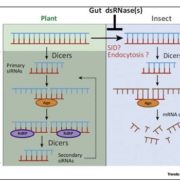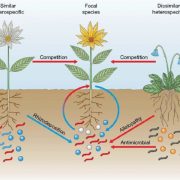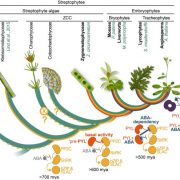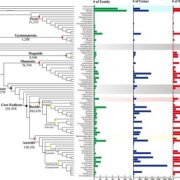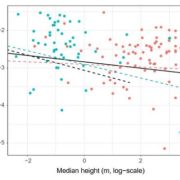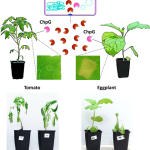A plant gene that shapes its ecosystem (Science)
 Keystone species shape the structure of an entire ecosystem, but can a gene determine structure of the whole ecosystem? A recent study indicates yes, some genes can, and such genes are called keystone genes. Barbour et al. set up a small ecosystem containing two herbivore aphids, one predator of these aphids, and Arabidopsis plants carrying mutations in any of three genes. The genes are involved in biosynthesis of glucosinolates (compounds that deter herbivory), so regulate herbivore tolerance and show natural variation in expression across various Arabidopsis genotypes. The authors observed that with time, this tiny ecosystem moved towards a three-species system with one herbivore becoming extinct. Eventually, either this three-species system remained stable, or transformed into a “plant-only” ecosystem. The authors observed one particular gene, AOP2, helps determine the final structure of this tiny ecosystem. The null allele of AOP2 helps in stabilizing the three-species food chain by increasing the plant growth rate, thus supporting growth of an aphid and its predator. Thus, Arabidopsis AOP2 acts as a keystone gene determining the structure of the ecosystem around the plant. (Summary by Kamal Kumar Malukani, @KamalMalukani) Science 10.1126/science.abf2232
Keystone species shape the structure of an entire ecosystem, but can a gene determine structure of the whole ecosystem? A recent study indicates yes, some genes can, and such genes are called keystone genes. Barbour et al. set up a small ecosystem containing two herbivore aphids, one predator of these aphids, and Arabidopsis plants carrying mutations in any of three genes. The genes are involved in biosynthesis of glucosinolates (compounds that deter herbivory), so regulate herbivore tolerance and show natural variation in expression across various Arabidopsis genotypes. The authors observed that with time, this tiny ecosystem moved towards a three-species system with one herbivore becoming extinct. Eventually, either this three-species system remained stable, or transformed into a “plant-only” ecosystem. The authors observed one particular gene, AOP2, helps determine the final structure of this tiny ecosystem. The null allele of AOP2 helps in stabilizing the three-species food chain by increasing the plant growth rate, thus supporting growth of an aphid and its predator. Thus, Arabidopsis AOP2 acts as a keystone gene determining the structure of the ecosystem around the plant. (Summary by Kamal Kumar Malukani, @KamalMalukani) Science 10.1126/science.abf2232


